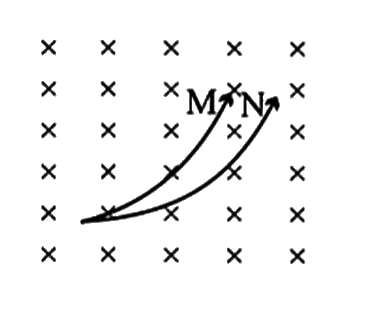Assertion: Two particles of same charge projected with different velocity normal to electric field experience same force
Reason: A charged particle experiences a force in electric field which is independent of velocity
Both Assertion and Reason are true and Reason is the correct explanation of Assertion
Both Assertion and Reason are true and Reason is not the correct explanation of Assertion
Assertion is true and Reason is false
Assertion is false and Reason is false
The correct Answer is:A
Similar Questions
(A): Two particles of same charge projected with different velocity normal to electric field experience same force
(R ): A charged particle experiences force, independent of velocity in electric field
View SolutionIf a charged particle at rest experiences no electromagnetic force, then electric field in that region
View Solution
Knowledge Check
Assertion(A):Two partical of same charge projected with different velocity normal to electric field experience same force
Reason (R ) : A charged particle experience force indpendent of velocity in electric force.
Reason (R ): A charged paricle experiences force, independent of velocity in electric fields.ABoth (A) and (R) are true and 'R' is the correct explanation of A.BBoth A and R are true and R is not the correct explanation of ACA is true and R is falseDA is false and R is true.Force acting on a moving charged particle in a region of electric and magnetic fields is called
ALorentz forceBAmpere's forceCBlot-Savart's forceDMaxwell’s force
If a charged particle at rest experiences no electromagnetic force, then electric field in that region
View SolutionIf a charged particle at rest experiences no electromagnetic force, then
The electric field must be zero
View SolutionIf a charged particle at rest experiences no electromagnetic force, then
The electric field must be zero
View SolutionTwo charged particle M and N are projected with same velocity in a uniform magnetic field. Then M and N respectively.

View SolutionTwo charged particle M and N are projected with same velocity in a uniform magnetic field. Then M and N respectively.

View SolutionThe cyclotron is a device which is used to accelerate charged particles such as protons, deutrons, alpha particles, etc. to very high energy. The principle on which a cyclotron works is based on the fact that an electric field can accelerate a charged particle and a magnetic field can throw it into a circular orbit. A particle of charge +q experiences a force qE in an electric field E and this force is independent of velocity of the particle. The particle is accelerated in the direction of the magnetic field. On the other hand, a magnetic field at right angles to the direction of motion of the particle throws the particle in a circular orbit in which the particle revolves with a frequency that does not depend on its speed. A modest potential difference is used as a sources of electric field. If a charged particle is made to pass through this potential difference a number of times, it will acquire an enormous by large velocity and hence kinetic energy.
Which of the following cannot be accelerated in a cyclotron?
View Solution
